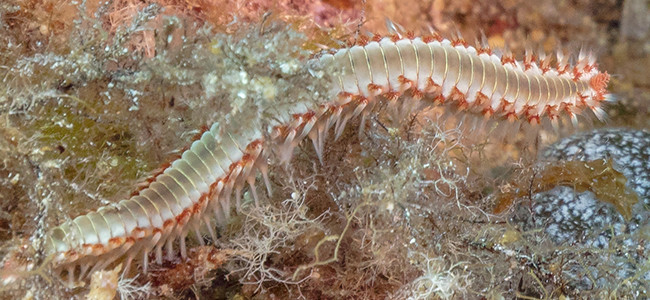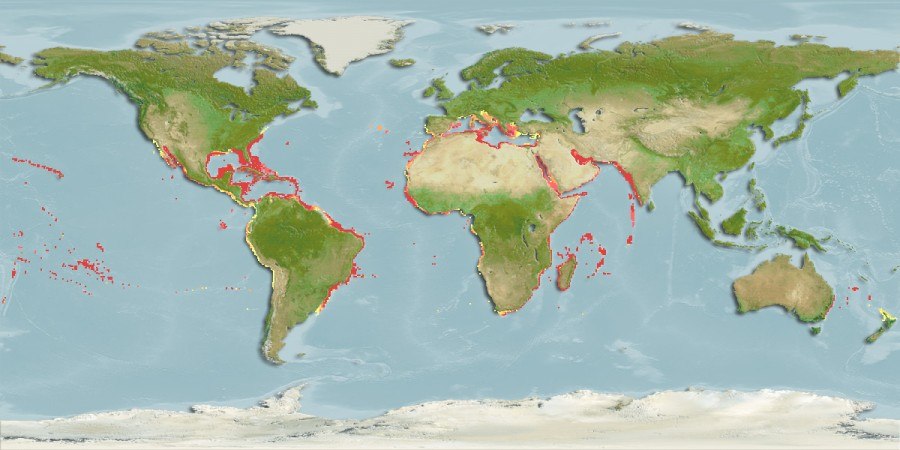Hermodice carunculata, commonly known as the fireworm, belongs to the family Amphinomidae within the order Amphinomida. Its scientific name derives from Greek, where ‘Hermodice‘ refers to Hermes, the messenger of the gods, and ‘carunculata‘ means ‘with caruncle‘, referring to the prominent structure on its head. This polychaete is found in tropical and subtropical waters of the western Atlantic, including the Caribbean Sea, and also in the eastern Mediterranean, mainly inhabiting coral reefs, rocky bottoms, and seagrass beds.
Morphologically, Hermodice carunculata can reach a length of up to 4 cm, although it usually ranges between 1 and 1.5 cm. Its body is composed of numerous segments, each equipped with stinging bristles called chaetae, which can cause severe irritation upon contact. Its coloration is variable but typically displays reddish, orange, and white tones, giving it a very distinctive appearance that warns potential predators of its toxicity. A distinguishing feature of this species is the presence of a prominent caruncle in the anterior region of its head, which is absent in similar species such as Eurythoe complanata, which is flatter and lacks this prominent structure.
Regarding its feeding habits, Hermodice carunculata is a voracious predator and scavenger. Its main food sources include corals, especially stony corals of the genus Acropora, marine sponges, and sea anemones. This worm feeds on coral polyps, sometimes contributing to coral reef bleaching and degradation. It also consumes organic detritus, making it an important actor in nutrient recycling processes within its environment.
The reproductive habits of Hermodice carunculata are fascinating and have been the subject of numerous studies. Its reproduction is mainly sexual, occurring during the warmer months. During the reproductive period, these worms release gametes into the water column, where external fertilization takes place. On some occasions, a pre-reproductive courtship is observed, characterized by the aggregation of several individuals under high-density conditions. The resulting larvae, known as trochophores, become part of the plankton before settling on the seafloor and metamorphosing into adults.
As an additional note, Hermodice carunculata is not only fascinating due to its biological attributes but also because of its ecological interactions. This polychaete has shown competitive relationships with coral-feeding fish species, such as those of the genus Chaetodon. Moreover, the stinging chaetae of Hermodice carunculata have evolved highly effective defense mechanisms against potential predators such as fish and molluscs, making it an interesting species from both ecological and evolutionary perspectives.
In conclusion, Hermodice carunculata is an iconic species of the underwater world, standing out not only for its striking appearance and stinging bristles but also for its role in coral reef ecosystems. Its adaptability and complex ecological interactions make this fireworm a subject of great interest to scientists and enthusiasts alike.
Photos:


 from
from